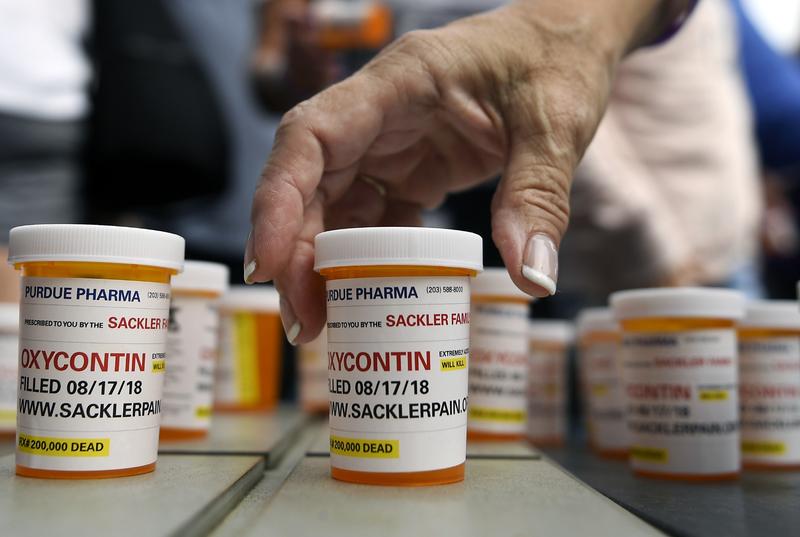The Opioid Epidemic: How Trying to Treat Pain Has Produced More
Photo Credit: Jessica Hill
Prescription drugs like OxyContin can can lead to serious opioid dependencies.
March 8, 2019
In the U.S., you’re more likely to die from an accidental opioid overdose than a car accident. That’s according to research published by the National Safety Council. Opioids are a class of drug that bind to receptors in the brain that mimic the natural process of pain reduction, and include illegal drugs like heroin as well as prescribed drugs like OxyContin. Touching lives across the country, the rise of this leading cause of death all began with something we all know: pain.
The epidemic stems from a movement among physicians that caught on in the 1990s to better treat patients’ pain. The general consensus at the time, an idea promoted enthusiastically by pharmaceutical companies, was that opioids were a safe and effective method of treating pain. Papers published on their addictive tendencies were brushed aside in favor of papers that indicated their promise, and doctors began to prescribe opioids at increasing rates.
Adding to this increase was the fact that hospitals across the country kickstarted a new focus on pain. The Joint Commission — an organization that regulates most hospitals in the U.S. — created guidelines that required doctors to ask all their patients to rate their pain on a scale of 1 to 10, even if they were coming in for an issue entirely unrelated to pain. They would be asked to give a second rating after they left.
The U.S. government then took an interest in these pain surveys, which could indicate whether patients’ discomfort was treated effectively. Hospitals that took patients with government insurance, like Medicare, would face financial penalization if they weren’t doing well on those pain surveys. Needless to say, opioids got doled out generously, becoming the standard treatment for all kinds of pain.
This leap in prescription has precipitated the subsequent increase in addiction. In fact, roughly twenty-one to twenty-nine percent of those given opioid prescriptions for chronic pain misuse them. Legal opioids can be the gateway to more potent –and dangerous — drugs, like heroin; 80 percent of those who use heroin first misused prescription opioids.
As we manage the scope of the epidemic, treatment is one of the big questions. Although some prefer encouraging addicts to go completely off opioids, medication has promise. The two main medications currently used to treat opioid addiction are Methadone and Buprenorphine. These medications bind to opioid receptors and activate them. However, these chemicals latch onto the receptor for much longer than a drug like heroin, thus reducing cravings. Neither causes euphoria in addicts.
Concerns may arise that prescribing addicts Methadone or Buprenorphine could be substituting one opioid addiction for another. Yet these medications can enable addicts to return to their regular lives. They can be thought of like a medication for a chronic disease; patients can take it to manage symptoms of withdrawal. Their risk of relapse, then, is substantially reduced.
Resolving the crisis requires preventing these addictions in the first place, too. Doctors are now moving to reduce opioid prescriptions and instead recommend alternative ways to manage pain, such as exercise, physical therapy, and acupuncture. Opioids aren’t actually that effective as a treatment of pain. A high dose of tylenol, for example, has been proven to work as well as Vicodin for broken bones. Plus, there has been no high quality evidence that chronic back pain can be helped long term by opioid use; in some cases, it can even be made worse.
Ultimately, the opioid epidemic is a story of how trying to treat pain has led to further suffering. To reverse the grasp this crisis has on our nation, we must return to its roots: transforming the way we treat pain in our healthcare system.


